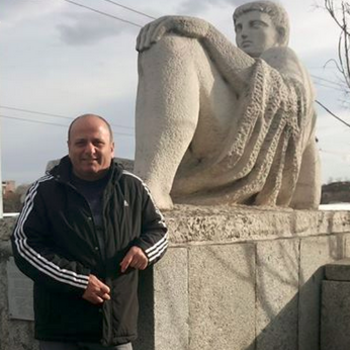Question is shown below?
1 Answer
Explanation:
-
The following approaches has been used to solve the problem.
1- air friction has been neglected.
2- water's momentum has been conserved.
3- water hitting the wall has been completely reflected. -
the velocity vector of the water changes because both the magnitude and the direction have changed.
- the velocity vector of water has been shown in figure below as red and blue respectively.
- the momentum vector of the water hitting to the wall and of the water reflected are shown in figure below.
- the changing of velocity causes a change of momentum of the water.
- The momentum change vector is drawn as follows.
-
The momentum change vector is perpendicular to the wall.
-
The momentum change vector is at the negative direction.
-
the directions have selected as randomly. You can change if you want.
-
the magnitude of change of momentum is :
- if we accept momentum is conserved we can write as fallows.

